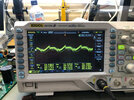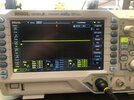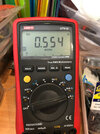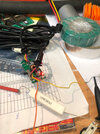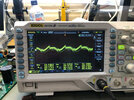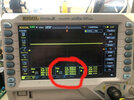The ripple should be measured in with AC coupling, and i think with a time base long enough to capture the ripple.
I think the measurement is lost in the noise with 5v per division on the vertical scale and thus the ripple measurement is low res and consistent, but only due to the lack of resolutions with the scope settings, not because it's clean.
well don't be too harsh they did send some....looking forward to the test results
Will be testing in the next 24 hrs. Not being harsh on Viofo Intl, just Viofo Australia, who i still have not heard from after submitting a ticket and following up with a phone call.
Viofo Intl responded within hours and I have the units they sent.
Here is a sneak peak at one of them...

17.3mV of ripple... clean as a whistle.
For anyone not used to a scope it might look bad, but we usually 'zoom' in a bit to see the waveform clearly.
The vertical scale is in the bottom left, 5mV per division, so quite a fine measurement.
Exact same chip and circuit as the faulty units, but different colour (shade really) solder mask, could mean anything really, but possibly different manufacturer, or simply incontinences in solder mask being used.
Voltage is high, >5.5v not sure why they do that as the reg in use has the ability to compensate for the lead length to be sure 5v is reaching the camera.
To be clear this >5.5 is measured with a 1A load at the end of the lead too.
Far cry from the 4.15V in the faulty units.
The DC

C conversion is pretty efficient, but with that high voltage if the regulation in the camera itself is linear this is going to be overall less efficient and will increase heat.
Half a watt in addition to heat previously generated at 5.0v in a confined space is enough to spare a thought about.
Given we've had 2 faulty in a row i wonder how many there were.
I'd be happy to test the units for the seller, but not sure they would be interested.
Overall i'm being a little nit picky on the replacement, it seems as if it will be sufficient to do the job, and it's stats are much improved.
Thanks to Viofo for sending them, and doing so very quickly.

